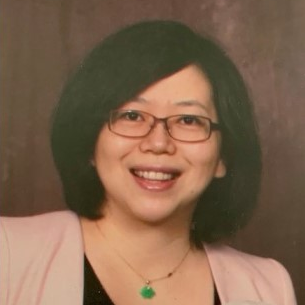Advanced Membranes for Carbon Capture 2021
A special issue of Membranes (ISSN 2077-0375). This special issue belongs to the section "Membrane Applications".
Deadline for manuscript submissions: closed (20 January 2022) | Viewed by 11089
Special Issue Editors
Interests: membrane separation; polymeric membrane; water purification; CO2 capture; graphene-based membrane
Interests: novel membrane materials for CO2 capture from flue gas and syngas; antifouling membranes for water purification; understanding of polymer struc-ture/property correlations in thin films
Special Issues, Collections and Topics in MDPI journals
Interests: CO2 capture and storage; functional polymers; polymer composite; green polymer; gas separation membrane
Special Issues, Collections and Topics in MDPI journals
Interests: reactor design; reaction engineering; separations; environmental remediation
Special Issues, Collections and Topics in MDPI journals
Interests: ceramic membranes; microporous membranes; gas separation; membrane reactors; carbon capture; hydrogen production and purification; catalytic membranes; metal membranes
Special Issues, Collections and Topics in MDPI journals
Special Issue Information
Dear Colleagues,
We cordially invite you to submit your research work or review article to this Special Issue entitled “Advanced membranes for carbon capture 2021.” Climate change caused by anthropogenic CO2 emission is a global challenge we are facing. The combustion of fossil fuels produces enormous amounts of CO2 in the flue gas being released into the atmosphere. To mitigate the CO2 emissions, the CO2 must be captured for utilization or sequestration. Membrane-based separation offers an effective approach for CO2 capture (carbon capture) due to their high energy efficiency, small footprint, and simplicity of operation and maintenance. However, advanced membrane materials and process designs are needed to achieve superior CO2 separation performance and reduce the cost of carbon capture.
The purpose of this Special Issue is to publish recent advances in materials and processes (emerging or with a high Technology Readiness Level (TRL)) for membrane-based carbon capture. The topics of interests include, but not limited to, novel membrane materials (polymers, ceramics, metallics, metal-organic frameworks, 2-D materials, and mixed matrix materials) for various capture schemes (such as post-combustion capture, pre-combustion capture, carbon capture from industrial sources, direct air capture, etc.), emerging processes or hybrid processes based on membranes, techno-economic analysis, preparation and characterization of thin-film composite membranes or hollow fiber membranes, etc.
We are looking forward to receiving your outstanding work for this Special Issue.
Dr. Liang Huang
Prof. Dr. Haiqing Lin
Dr. Naiying Du
Prof. Dr. Theodore T. Tsotsis
Dr. Thijs A. Peters
Guest Editors
Manuscript Submission Information
Manuscripts should be submitted online at www.mdpi.com by registering and logging in to this website. Once you are registered, click here to go to the submission form. Manuscripts can be submitted until the deadline. All submissions that pass pre-check are peer-reviewed. Accepted papers will be published continuously in the journal (as soon as accepted) and will be listed together on the special issue website. Research articles, review articles as well as short communications are invited. For planned papers, a title and short abstract (about 100 words) can be sent to the Editorial Office for announcement on this website.
Submitted manuscripts should not have been published previously, nor be under consideration for publication elsewhere (except conference proceedings papers). All manuscripts are thoroughly refereed through a single-blind peer-review process. A guide for authors and other relevant information for submission of manuscripts is available on the Instructions for Authors page. Membranes is an international peer-reviewed open access monthly journal published by MDPI.
Please visit the Instructions for Authors page before submitting a manuscript. The Article Processing Charge (APC) for publication in this open access journal is 2700 CHF (Swiss Francs). Submitted papers should be well formatted and use good English. Authors may use MDPI's English editing service prior to publication or during author revisions.
Keywords
- Membranes
- Carbon capture
- Polymer membranes
- Ceramic membranes
- Metallic membranes
- Metal-organic frameworks
- 2-D materials
- Mixed matrix materials
- Techno-economic analysis
- Process design










